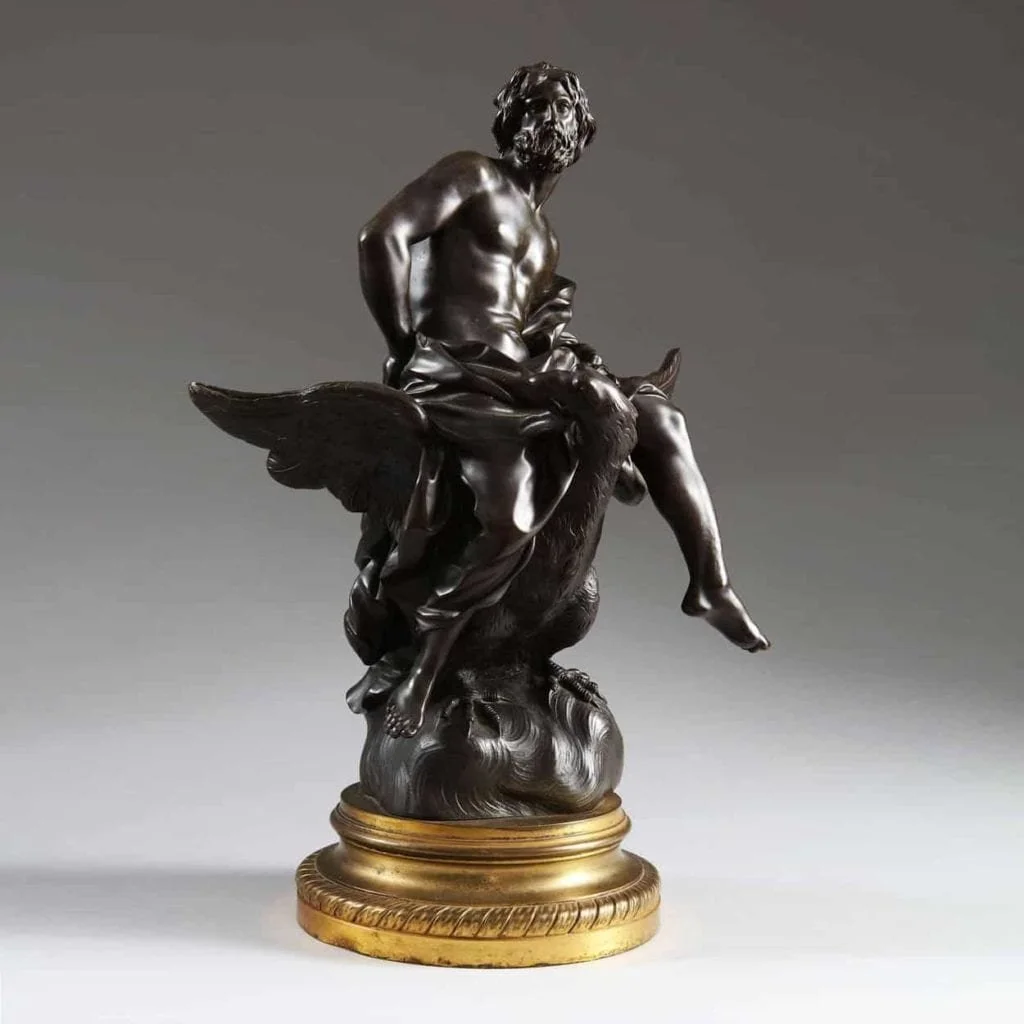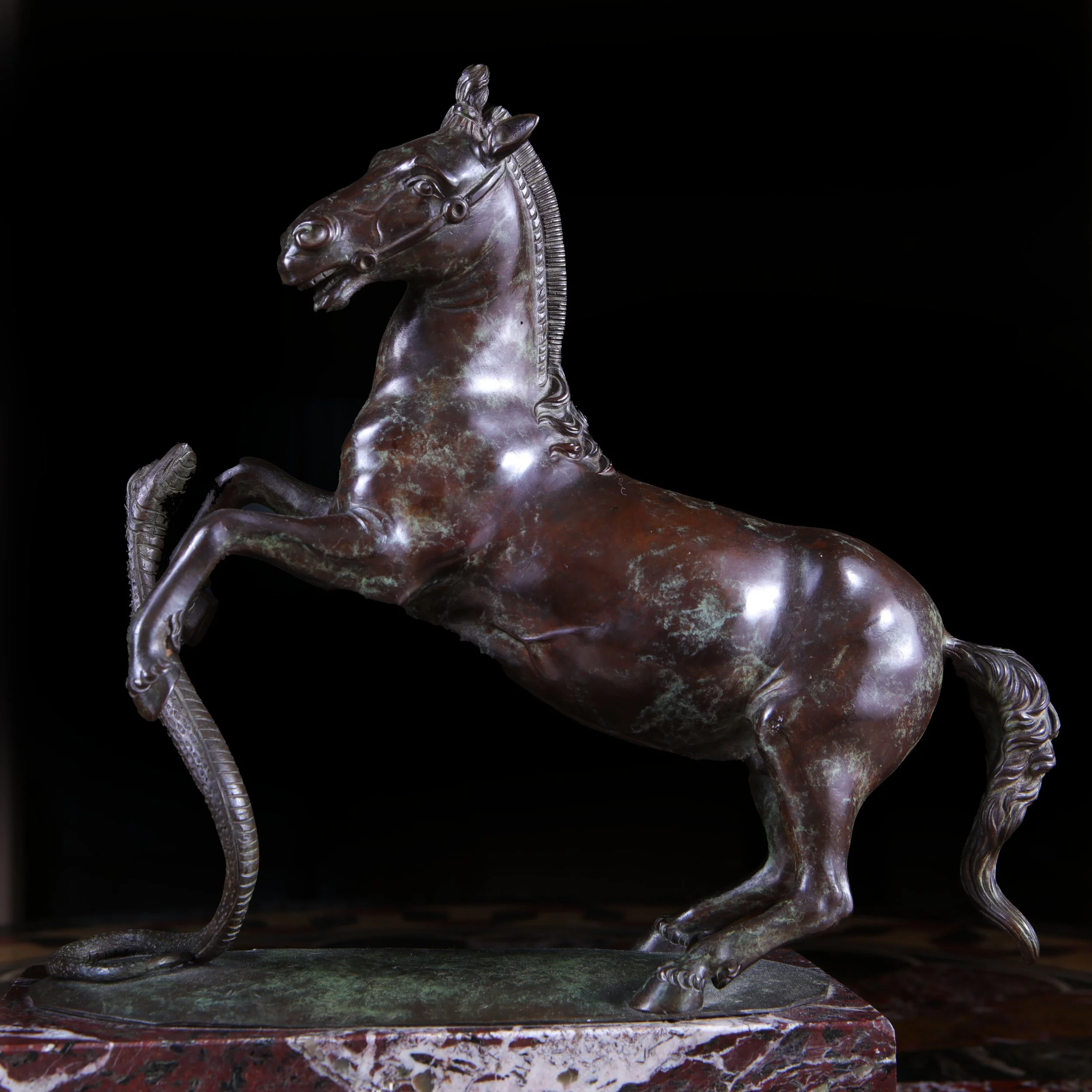A Royal bronze portrait bust of Prince Albert, the Prince Consort, after the marble sculpture of 1859 by William Theed the Younger (1804-1891)
A Royal bronze portrait bust of Prince Albert, the Prince Consort, after the marble sculpture of 1859 by William Theed the Younger (1804-1891)
A Royal bronze portrait bust of Prince Albert, the Prince Consort, after the marble sculpture of 1859 by William Theed the Younger (1804-1891)
Size: 15 inches (38 cm) high; 10.2 inches (26 cm) wide; 6.3 inches (16 cm) deep
Marks and inscriptions:
W.THEED. SC. LONDON 1862 [and] ELKINGTON & Co. FOUNDERS
Stock number VT20494
🔶 On Consignment
This bronze is cast after a marble portrait bust of Prince Albert dating from 1859 but only produced in this form after the Prince’s death in 1861. The Prince is shown wearing a classical toga across his chest, gathered and fastened over his left shoulder and leaving his right shoulder uncovered. In style, it is very similar to the commemorative bust of Prince Albert, also made by Theed, which the Queen commissioned soon after she was widowed; although for the latter bust Prince Albert is depicted with bare shoulders.
Queen Victoria and Prince Albert together had been committed patrons of neo-classical sculptors; marble being a preferred media due to its pale colour, smoothness and durability and because of its symbolic associations with purity and intransience - increasingly important moral beliefs amongst Victorians. The Queen and Prince Consort also saw marble sculpture as an important decorative element in the royal palaces, they frequently bought or commissioned works in marble to present as birthday, anniversary or Christmas gifts.
William Theed the Younger (1804-1891) was one of their favourite artists. Initially he trained under his father William Theed the Elder (1764-1817) but journeyed to Rome in 1826 to study and work in the studio of the famous neo-classical artist Bertel Thorvaldsen, at the same time enjoying the friendship and influence of British sculptors John Gibson and Richard James Wyatt. Interest shown by Queen Victoria and Prince Albert motivated his return to England in the late 1840s. He exhibited at the Royal Academy between 1824 and 1885.








